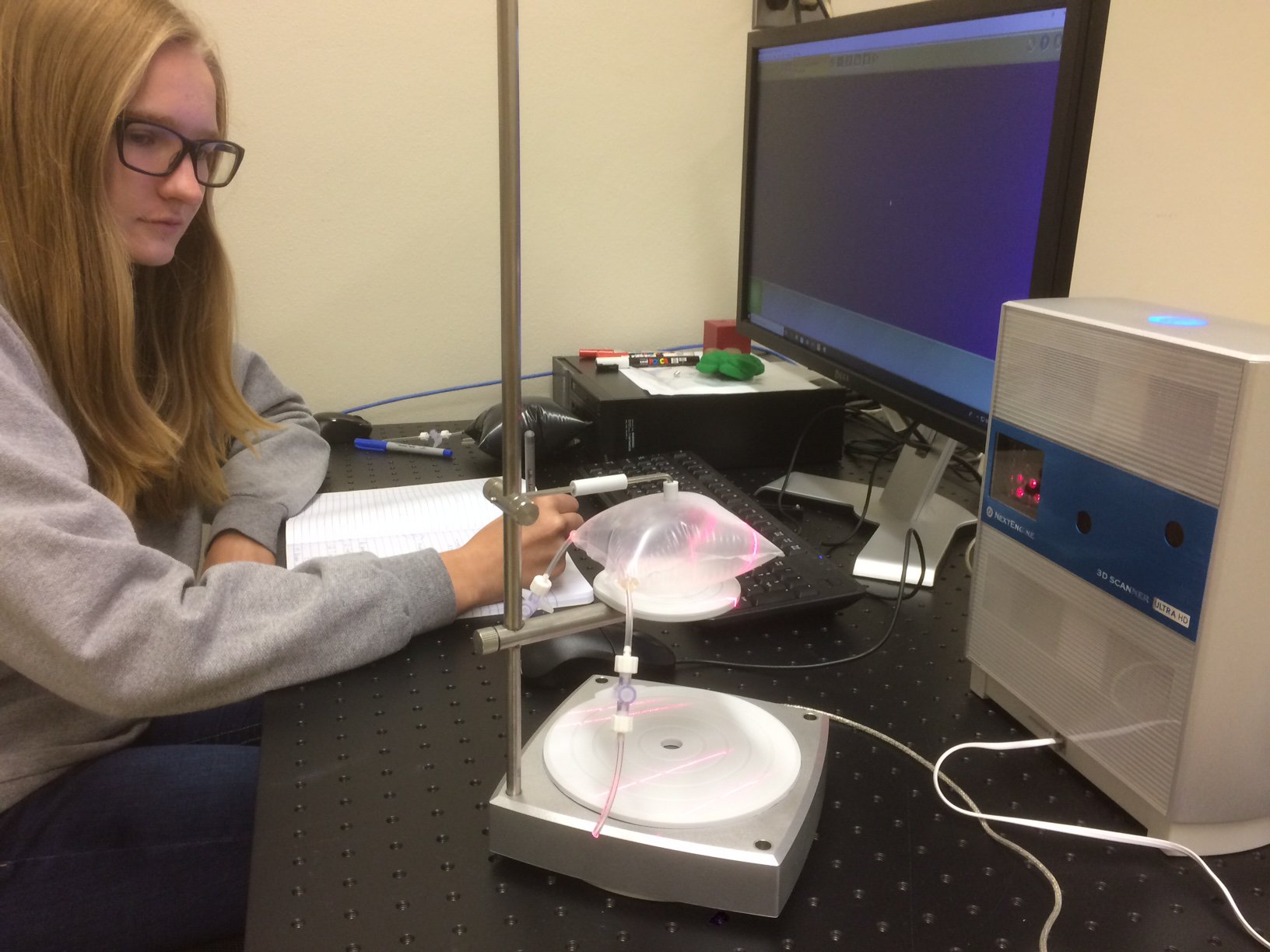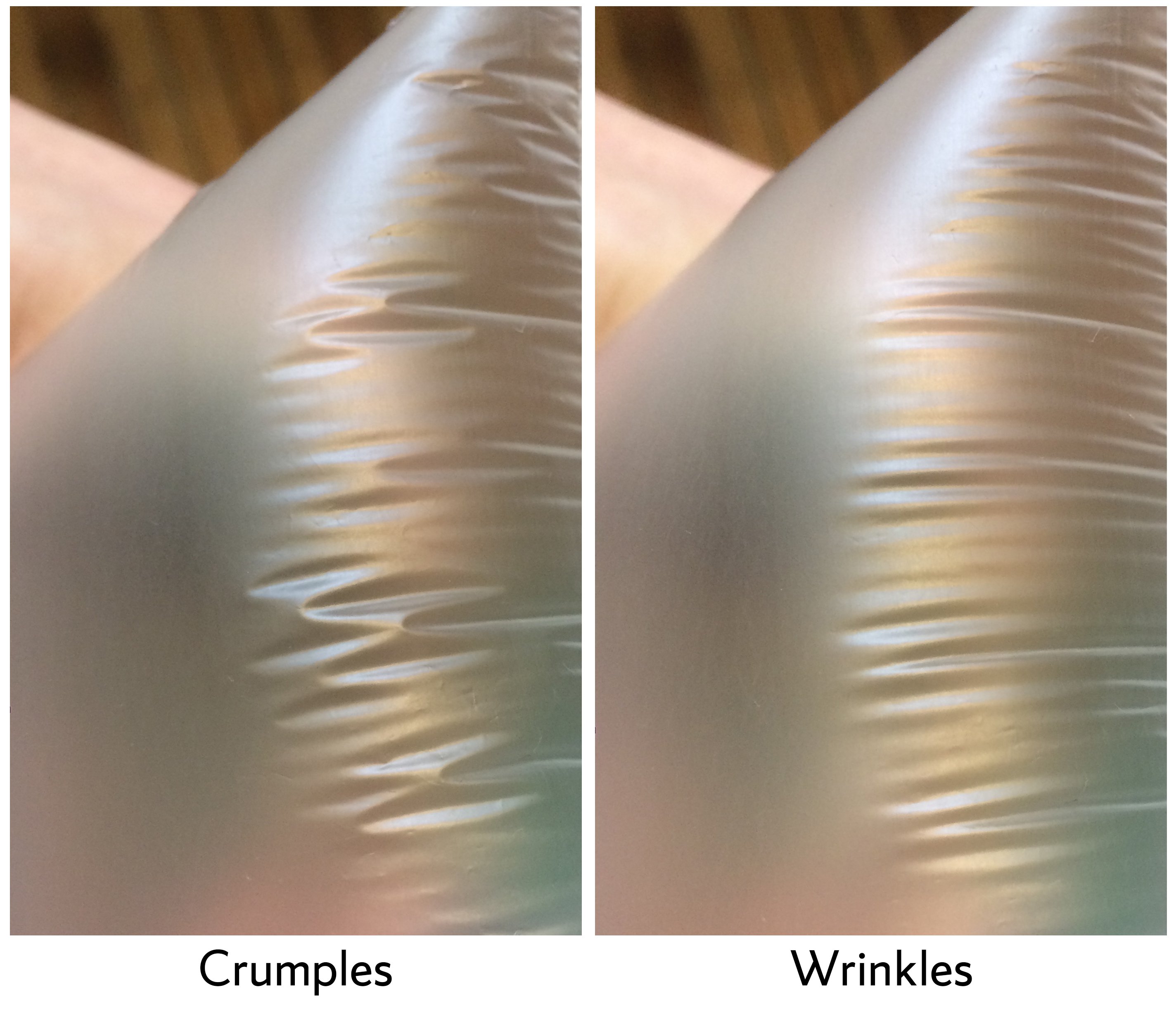Physics Faculty Research Published in Scholarly Journals
Articles featured in Physical Review X and Physical Review Letters.

Research by Assistant Professor Joseph Paulsen and Distinguished Professor Sheldon Stone from the Department of Physics was recently featured in scholarly physics journals. Paulsen’s work on predicting how soft materials crumple and wrinkle was published in the journal Physical Review X. Stone’s research on the structure of matter inside elementary particles known as baryons was featured in the journal Physical Review Letters.
The Science Behind Soft Materials
Many people would think the difference between the smooth wrinkles on skin and sharp creases in a crumpled ball of paper are based on the material itself, but researchers from the Paulsen lab have determined that this is not necessarily the case. The team concluded that the way a material is handled is just as important as the makeup of the material in producing and reproducing sharp features known as crumples. Their research, “Crumples as a generic stress-focusing instability in confined sheets,” is featured in the journal Physical Review X.

The research group, led by Assistant Professor and BioInspired Institute faculty team member Joseph Paulsen, along with postdoctoral researcher Yousra Timounay, graduate students Raj De, Zac Schrecengost and Monica Ripp, and former REU undergraduate researcher Jessica Stelzel, carried out the work by squeezing and inflating plastic and rubber sheets in a variety of experiments. They developed methods to turn “wrinkles,” which are wavy undulations on a surface, into “crumples,” which are sharper and more focused undulations, and then back.
While previous research on wrinkles focused on how they behave on otherwise flat surfaces, the team determined that wrinkles may not even form when their underlying surface is curved. As a flat material is curved, they found that wrinkles are replaced by sharp crumples that distribute forces in the sheet in a much different way. This could be important for real life applications like designing a synthetic skin or trying to understand the mechanics of a biological tissue.
In addition, they found that crumples don’t discriminate based on size as they observed them in polymer films floating on water and large inflated balloons. As Paulsen explains, studying crumples on one scale is a great way to understand them on another scale. The physics of a crinkled candy wrapper or a birthday balloon can teach researchers things that are important for designing deployable satellites or understanding ripples in a cell membrane or the earth’s crust.

The Universe’s Building Blocks
Distinguished Professor Sheldon Stone’s and graduate student Aravindhan Venkateswaran’s article, “Isospin Amplitudes in Λ0b→J/ψΛ(Σ0) and Ξ0b→J/ψΞ0(Λ) Decays,” looked at how matter is structured inside baryons, which are elementary particles that are the building blocks of most matter. Two common types of baryons that make up most of the mass of visible matter in the Universe are protons and neutrons, which are composed of quarks. They found that two quarks within one type of baryon, similar to a proton, pair up while leaving one independent. Understanding the behavior of these quarks, which are the fundamental building blocks of all particles, could help answer questions about the evolution of the Universe.
Using data collected from CERN, the European Organization for Nuclear Research, they studied a particle called the /\b, which is similar to a proton but contains a heavier quark. The team determined that the two light quarks within the /\b particle pair up to form a diquark while one remains independent.
Since baryons form the nuclei of all atoms, new research about their internal structure can lead to predictions of new types of matter and interactions. For example, the Syracuse University team found evidence in 2015 of a baryon made of five quarks, called a pentaquark. The proof of diquarks supports those results. The presence of pentaquarks leads to changes in the formation of stars and has implications for our understanding of the evolution of the Universe.
Featured
Sheldon Stone Distinguished Professor
Joseph Paulsen Associate Professor and Director of Undergraduate Studies
Media Contact
Dan Bernardi
